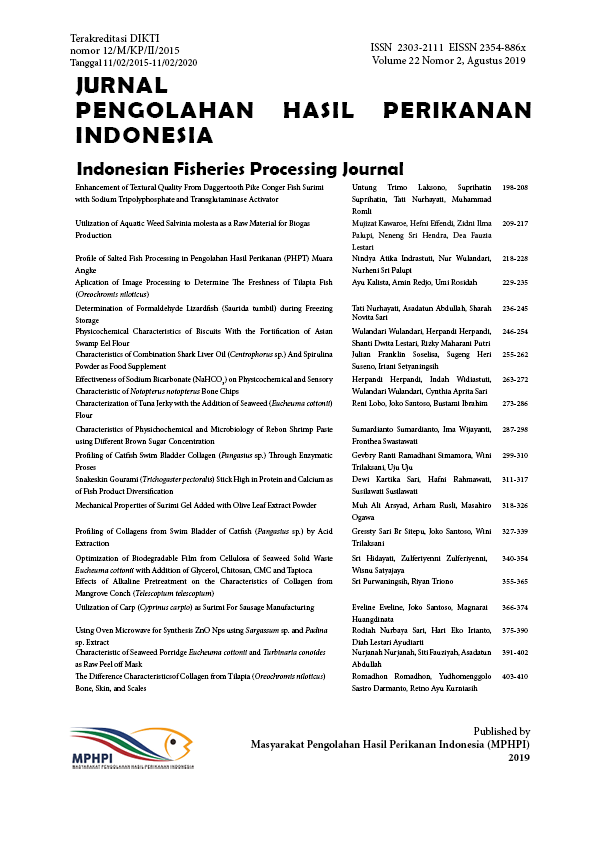Utilization of Aquatic Weed Salvinia molesta as a Raw Material for Biogas Production
Abstract
Salvinia molesta is an aquatic weed having very high growth rate. The high abundance of this species biomass could be utilized as a source of alternative energy. This research was aimed to utilize S. molesta as a substrate for biogas production using batch system in order to reduce euthrofication effect in a lake. Cow manure was used as starter for anaerobic process because containing bacteria. Proximate test was conducted to analyze the chemical characteristics of the aquatic weed. Chemical oxygen demand, total solid, and total volatile suspended solid of weed and manure were analyzed according to the APHA 2012 method. Biogas composition was analyzed with gas chromatography. The results showed that the S. molesta contained high lignin content and low C:N ratio. Hydrolisis and acidification process occured very rapid, resulting in an increase of the weed and manure mixture COD. In the other hand, the decreased of COD removal was caused by the massal death of methanogenesis bacteria. The total solid and total volatile suspended solid content were not significantly decreased. Potential biogas production from S. molesta was 58.16 L.kg-1 with 318.29 mL.gram VS-1day-1 of methane production. This production value was still low or compared to that of cow manure which have been established as biogass materials and need modification to improve the biogas production.
Authors

This work is licensed under a Creative Commons Attribution 4.0 International License.
Authors who publish with this journal agree to the following terms:
- Authors retain copyright and grant the journal right of first publication with the work simultaneously licensed under a Creative Commons Attribution License that allows others to share the work with an acknowledgement of the work's authorship and initial publication in this journal.
- Authors are able to enter into separate, additional contractual arrangements for the non-exclusive distribution of the journal's published version of the work (e.g., post it to an institutional repository or publish it in a book), with an acknowledgement of its initial publication in this journal.





